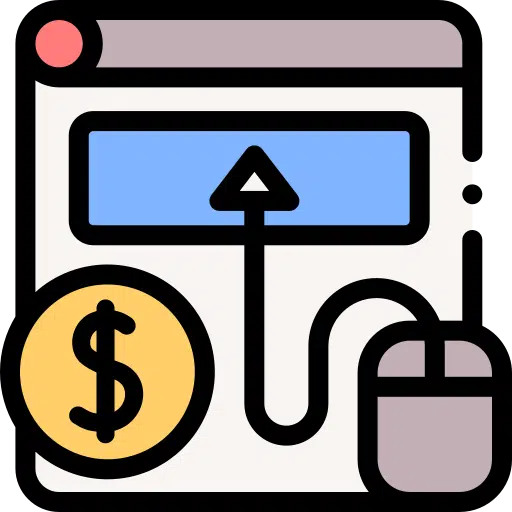Understanding Pay Per Click (PPC) Campaigns
In the world of online advertising, Pay Per Click (PPC) campaigns play a crucial role in driving targeted traffic to websites and increasing conversions. Understanding what PPC advertising is and the benefits it offers can help businesses maximize their marketing efforts.
What is Pay Per Click Advertising?
Pay Per Click advertising is a digital advertising model in which advertisers pay a fee each time their ad is clicked. Essentially, it’s a way of buying visits to a website rather than relying solely on organic traffic. PPC ads are displayed on search engine results pages (SERPs) and various online platforms, targeting specific keywords, demographics, or interests.
Popular platforms for PPC advertising include Google AdWords, Facebook Ads, YouTube Ads, Bing Ads, Instagram Ads, Twitter Ads, and LinkedIn Ads. Each platform offers unique targeting options and ad formats to reach a specific audience. To learn more about these platforms, check out our article on digital advertising.
PPC advertising allows businesses to reach their target audience quickly and effectively. By bidding on relevant keywords or targeting specific demographics, advertisers can ensure their ads are displayed to the right people at the right time.
Benefits of PPC Campaigns
PPC campaigns offer several benefits that make them a powerful tool for businesses:
- Immediate Visibility: Unlike other marketing strategies, PPC campaigns can generate immediate visibility and traffic to your website. As soon as your campaign is live and approved, your ads can start appearing in search results, reaching potential customers instantly.
- Highly Targeted: PPC campaigns allow for precise audience targeting. Advertisers can select specific keywords, demographics, locations, and even interests to ensure their ads are seen by the most relevant audience. This level of targeting helps increase the chances of attracting potential customers who are more likely to convert.
- Cost Control: With PPC campaigns, businesses have control over their budget. Advertisers can set daily or monthly spending limits, ensuring they don’t exceed their desired advertising budget. Additionally, since advertisers only pay when their ads are clicked, it allows for better budget allocation and cost management. To learn more about cost-related terms in PPC campaigns, check out our article on cost per click.
- Measurable Results: PPC campaigns provide comprehensive data and analytics, allowing businesses to measure the success of their advertising efforts. Metrics like click-through rate (CTR), ad impressions, and ad conversions provide insights into the effectiveness of campaigns and help make informed decisions on optimizations. For deeper insights, businesses can leverage tools like ad tracking and landing page optimization. To learn more about these topics, check out our articles on ad tracking and landing page optimization.
- Flexibility and Scalability: PPC campaigns offer flexibility and scalability to businesses. Advertisers can make real-time adjustments to their campaigns, such as modifying ad copy, adjusting bidding strategies, or pausing campaigns if necessary. This level of control allows businesses to adapt to changes in market trends and optimize their campaigns for better performance.
Understanding the basics of PPC advertising and the benefits it provides is essential for businesses looking to drive targeted traffic, improve conversions, and stay competitive in the online marketplace. By harnessing the power of PPC campaigns, businesses can effectively reach their target audience, generate leads, and drive growth.
Key Elements of a Successful PPC Campaign
To run a successful Pay Per Click (PPC) campaign, it’s important to understand the key elements that contribute to its effectiveness. These elements include setting clear goals and objectives, conducting keyword research and selection, and creating compelling ad copy and creative.
Setting Clear Goals and Objectives
Before launching a PPC campaign, it’s crucial to establish clear goals and objectives. These goals will guide your campaign strategy and help you measure its success. Common goals include increasing website traffic, generating leads, boosting sales, or raising brand awareness. By defining your goals from the start, you can tailor your campaign to achieve the desired outcomes.
Keyword Research and Selection
Keyword research is a fundamental step in any PPC campaign. By identifying relevant keywords related to your products or services, you can effectively target your ads to reach potential customers. Research popular search terms, consider long-tail keywords, and analyze keyword competition. This will help you optimize your campaign and maximize your ad’s visibility to the right audience. Check out our article on PPC keyword research for more insights.
Ad Copy and Creative Development
Creating compelling ad copy and creative assets is essential for capturing the attention of your target audience. Craft engaging headlines and descriptions that convey your unique selling propositions. Highlight the benefits of your products or services and use persuasive language to entice users to click on your ads. Visual elements, such as images or videos, can also enhance the impact of your ads. Remember to align your ad copy and creative with your target keywords to ensure relevancy.
By focusing on these key elements, you can lay a solid foundation for your PPC campaign. However, it’s important to note that these are just a few of the many factors to consider. To fully optimize your PPC campaign and drive conversions, you should also explore other aspects such as choosing the right platform, campaign structure and organization, and budgeting and bidding strategies. Stay tuned for the upcoming sections where we delve deeper into these topics.
Building an Effective PPC Campaign
To create a successful PPC campaign, it’s essential to focus on three key aspects: choosing the right platform, campaign structure and organization, and budgeting and bidding strategies.
Choosing the Right Platform
Selecting the appropriate platform for your PPC campaign is crucial as it determines where your ads will be displayed and who they will reach. There are several popular platforms available, each with its own unique features and audience. Consider your target market and the nature of your business to determine the most suitable platform for your campaign. Some common options include:
- Google AdWords: The largest and most popular PPC platform, offering a wide reach across search results and a vast network of websites.
- Facebook Ads: A highly effective platform for targeting specific demographics and interests.
- YouTube Ads: Ideal for video-based advertising and reaching a wide audience.
- Bing Ads: A platform that focuses on reaching users who prefer Bing as their search engine.
- Instagram Ads: A visually-driven platform with a younger demographic.
- Twitter Ads: Suitable for real-time engagement and reaching a highly active user base.
- LinkedIn Ads: Ideal for targeting professionals and business-to-business (B2B) marketing.
Carefully consider your target audience, campaign goals, and budget when choosing the right platform for your PPC campaign. Each platform offers unique benefits and targeting options that can help you maximize your campaign’s effectiveness.
Campaign Structure and Organization
A well-structured and organized PPC campaign is essential for efficient management and optimal performance. When setting up your campaign, consider the following elements:
- Ad Groups: Group your ads into relevant categories based on themes, products, or services. This allows for better ad targeting and customization.
- Keywords: Conduct thorough keyword research and selection to identify the most relevant and effective keywords for your campaign. Group similar keywords within each ad group to improve relevancy and click-through rates.
- Ad Copy: Create compelling and engaging ad copy that aligns with your campaign goals and targets the interests of your audience. Experiment with different variations and ad testing to determine the most effective ad copy.
- Landing Pages: Ensure your ads direct users to relevant and optimized landing pages. Landing page optimization plays a crucial role in converting ad clicks into desired actions.
By organizing your campaign structure effectively, you can improve ad relevancy, increase click-through rates, and ultimately drive better conversions.
Budgeting and Bidding Strategies
Budgeting and bidding strategies are vital components of a successful PPC campaign. Consider the following factors when setting your budget and determining your bidding strategy:
- Cost Per Click (CPC): Determine the maximum amount you are willing to pay for each click on your ads. Set your CPC based on the value of a conversion and the average cost per click for your chosen keywords.
- Ad Rank: Ad rank is determined by your bid amount, ad quality, and other factors. Higher ad rank increases visibility and the likelihood of attracting clicks. Focus on improving your quality score to achieve a better ad ranking.
- Bidding Strategies: Choose the most appropriate bidding strategy based on your campaign goals. Options include automatic bidding, manual bidding, and enhanced cost per click (ECPC). Experiment with different strategies and monitor their performance to optimize your bids.
Regularly monitor your budget and bidding strategies to ensure they align with your campaign goals. Adjustments may be necessary based on the performance and results of your ads.
By focusing on choosing the right platform, creating a well-structured campaign, and implementing effective budgeting and bidding strategies, you can build an efficient and successful PPC campaign. Continuously monitor and analyze your campaign’s performance, make necessary adjustments, and stay informed about industry trends to stay ahead in the rapidly evolving world of PPC advertising.
Optimizing Your PPC Campaign for Conversions
To maximize the effectiveness of your PPC campaign and drive conversions, it’s essential to continually optimize and refine your strategies. Here are three key aspects to focus on: monitoring and analyzing performance, A/B testing and experimentation, and adapting and refining your campaign.
Monitoring and Analyzing Performance
Regularly monitoring and analyzing the performance of your PPC campaign is crucial for identifying areas of improvement and making data-driven decisions. Keep a close eye on metrics such as click-through rate (CTR), conversion rate, and return on ad spend (ROAS). Use analytics tools provided by the advertising platforms or third-party tools to gain insights into the performance of your campaign.
By understanding which keywords, ads, and targeting options are driving the best results, you can optimize your campaign accordingly. Consider adjusting bids, pausing underperforming ads, and allocating more budget to high-performing keywords or demographics. Remember to track and analyze your campaign’s performance regularly to stay on top of any changes or trends.
A/B Testing and Experimentation
A/B testing, also known as split testing, is a powerful technique to optimize your PPC campaign. It involves creating multiple versions of your ads or landing pages and testing them against each other to determine which performs better. Through A/B testing, you can identify the most effective ad copy, call-to-action, visuals, and landing page elements.
To conduct A/B tests, make small, incremental changes to your ads or landing pages and test them simultaneously. Measure the performance of each variation and analyze the results to identify the winning version. Implementing the insights gained from A/B testing can significantly improve the performance and conversion rates of your campaign.
Adapting and Refining Your Campaign
As the PPC landscape is dynamic and ever-changing, it’s essential to adapt and refine your campaign based on the insights and data you gather. Stay updated with industry trends, emerging advertising platforms, and changes in search engine algorithms to remain competitive.
Regularly review and optimize your keyword research and selection to ensure you are targeting the most relevant and effective keywords for your audience. Experiment with different ad copy styles and creative development to keep your ads fresh and engaging. Consider utilizing ad retargeting techniques to reach users who have previously shown interest in your products or services.
Continuously refine your audience targeting and segmentation strategies to reach the most valuable audience segments. Leverage data and analytics to uncover patterns and trends that can inform your campaign adjustments. By constantly adapting and refining your PPC campaign, you can stay ahead of the competition and drive better conversion rates.
Remember, successful PPC campaigns require ongoing effort and optimization. By monitoring performance, conducting A/B tests, and adapting your campaign based on the data, you can continuously improve the effectiveness of your PPC strategy and drive meaningful conversions.
Best Practices for PPC Campaigns
To make the most of your PPC campaigns, it’s important to implement best practices that can help maximize your results. In this section, we will explore three key areas of focus: ad placement and ad extensions, targeting and segmentation, and quality score and ad rank.
Ad Placement and Ad Extensions
Choosing the right ad placement is crucial for the success of your PPC campaigns. By strategically selecting the platforms and networks where your ads will appear, you can reach your target audience effectively. Popular platforms for PPC advertising include Google AdWords, Facebook Ads, YouTube Ads, Bing Ads, Instagram Ads, Twitter Ads, and LinkedIn Ads.
Additionally, utilizing ad extensions can enhance the visibility and performance of your ads. These extensions provide extra information and links alongside your ad, such as site links, call buttons, and location information. Ad extensions not only make your ad more informative and engaging but also increase the chances of attracting clicks and conversions.
Targeting and Segmentation
Effective targeting and segmentation is key to reaching the right audience with your PPC campaigns. By understanding your target market, you can tailor your ads and messaging to resonate with their needs and interests. Audience targeting options include demographic targeting, geographic targeting, interest targeting, and more. Leveraging the power of precise targeting ensures that your ad budget is allocated to the most relevant audience, increasing the likelihood of conversions.
Segmentation allows you to divide your audience into smaller groups based on specific characteristics or behaviors. This enables you to create customized ads that speak directly to each segment, increasing the relevance and effectiveness of your campaigns. Segmenting your audience based on factors such as age, gender, location, or past interactions can help you deliver personalized messages that drive higher click-through rates and conversions.
Quality Score and Ad Rank
To achieve optimal performance in PPC campaigns, it’s crucial to understand and optimize your quality score and ad rank. Quality score is a metric used by search engines to assess the quality and relevance of your ads and landing pages. A higher quality score can lead to lower costs per click and higher ad rankings. Factors that influence quality score include click-through rate (CTR), ad relevance, landing page experience, and more. Improving your quality score through continuous optimization of your ads and landing pages can positively impact the performance and cost-effectiveness of your PPC campaigns.
Ad rank, on the other hand, determines the position of your ad in the search engine results pages (SERPs). It is calculated based on your bid, quality score, and expected impact of ad extensions and other ad formats. By improving your quality score and bid strategy, you can increase your ad rank and secure more prominent placements for your ads.
By following best practices in ad placement and ad extensions, targeting and segmentation, and optimizing your quality score and ad rank, you can drive better results and achieve your conversion goals with your PPC campaigns. Remember to consistently monitor and analyze the performance of your campaigns, experiment with different strategies, and stay updated with the latest trends and insights in the PPC industry to stay ahead of the competition.
Staying Ahead in the PPC Game
To achieve success in PPC campaigns, it is crucial for advertisers to stay ahead and adapt to the ever-evolving landscape of digital advertising. This section explores three key aspects that can help advertisers maintain a competitive edge: keeping up with industry trends, continuous learning and improvement, and leveraging data and analytics.
Keeping Up with Industry Trends
The world of PPC advertising is constantly evolving, with new platforms, features, and strategies emerging regularly. Advertisers need to stay informed about the latest industry trends to make informed decisions and optimize their campaigns effectively.
By keeping up with industry trends, advertisers can gain insights into emerging platforms such as Google AdWords, Facebook Ads, YouTube Ads, Bing Ads, Instagram Ads, Twitter Ads, and LinkedIn Ads. By exploring new advertising platforms, advertisers can reach wider audiences and tap into untapped markets.
Continuous Learning and Improvement
In the fast-paced world of PPC advertising, continuous learning is essential for advertisers to stay competitive. Advertisers should regularly invest time in expanding their knowledge and skills, attending webinars, reading industry blogs, and participating in online courses.
By continuously learning, advertisers can stay updated on new strategies, best practices, and techniques for successful PPC campaigns. This knowledge empowers advertisers to implement effective audience targeting strategies, optimize ad copy, and leverage the latest tools and technologies to maximize their campaign performance.
Leveraging Data and Analytics
Data and analytics play a pivotal role in the success of PPC campaigns. Advertisers should regularly analyze campaign data to identify trends, patterns, and areas for improvement. By leveraging data, advertisers can make data-driven decisions, optimize their campaigns, and allocate their budget effectively.
Key metrics such as click-through rate, conversion rate, and cost per click provide valuable insights into campaign performance. Advertisers can track the success of different ad creatives, audience targeting strategies, and keyword research to refine their campaigns and achieve better results.
Additionally, advertisers can leverage analytics tools and platforms to track ad impressions, monitor ad conversions, and measure the impact of their campaigns. This data-driven approach allows advertisers to make informed decisions and optimize their campaigns for maximum effectiveness.
By staying up-to-date with industry trends, continuously learning and improving, and leveraging data and analytics, advertisers can stay ahead in the competitive world of PPC advertising. It is essential to adapt and evolve strategies to meet the changing needs of the target audience and drive successful conversions.






